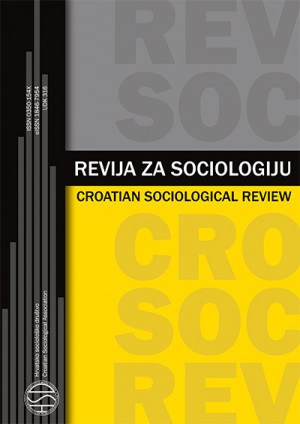Promjene u strukturi radno aktivnog stanovništva Hrvatske od 1971. do 2011.
Changes in the Structure of the Economically Active Croatian Population from 1971 to 2011
Author(s): Nenad Pokos, Krešimir PeračkovićSubject(s): Economic history, Labor relations, Sociology of the arts, business, education, Post-War period (1950 - 1989), Socio-Economic Research
Published by: Hrvatsko sociološko društvo
Keywords: labour force; economically active population; social development; economic demography; sociology of work;
Summary/Abstract: This paper provides analyses of the changes in the structure of the economically active Croatian population (labour force) and the inactive population (dependent people and people with personal income) from 1971 to 2011, as well as of the factors affecting them and their consequences. Due to a lack of recent literature on this topic, this work contributes to general insights into changes in the structure of the labour force. Data sources were Croatian population censuses. The method of demographic statistics with a comparative analysis of the monitored characteristics from the successive censuses was applied to the total population and by gender. Analyses indicated that in the 1971–2011 period the share of the labour force remained virtually unchanged. In 1971, 43.6% of the population was economically active, while in 2011, the share was 41.9%. The inactive population, which is not in the labour force contingent, continuously comprised the majority of the Croatian population. Its share was 56.4% in 1971 and 58.1% in 2011. Significant and alarming changes have taken place in the categories of people with personal incomes (a share of 8.8% in 1971 compared to 30.2% in 2011) and dependent population (which decreased from 47.6% in 1971 to 27.9% in 2011). The increase in the share of people with personal income was a consequence of population aging and a larger number of retired persons. Simultaneously, depend¬ent population and the share of young people decreased due to a reduced natality. Those indicators show that the structure of the Croatian population according to economic activity is an exceptionally negative and regressive social factor. It constitutes, to conclude, a possible structural obstacle to the long-term development of Croatian society.
Journal: Revija za sociologiju
- Issue Year: 46/2016
- Issue No: 3
- Page Range: 297-323
- Page Count: 27
- Language: Croatian

